Introduction: Two Worlds, One Story
Students who complete ICSE project work often discover they have more than a stack of notes and a report — they have evidence of research, creativity, and independent learning. Across the ocean, Advanced Placement (AP) students build portfolios and Capstone evidence that admissions officers and colleges prize. If you’re an ICSE student (or a parent of one) wondering how that project can become meaningful for AP-style portfolios or the AP Capstone program, this guide is for you.
We’ll translate the language of ICSE into the expectations of AP: what counts as evidence, how to structure materials, how to highlight skills, and practical steps to make your work shine. Along the way you’ll find examples, a simple conversion table, and tips for timelines — plus how targeted support like Sparkl’s personalized tutoring (1-on-1 guidance, tailored study plans, and expert tutor feedback) can make the process smoother.
Why Convert an ICSE Project into AP Portfolio/Capstone Evidence?
At first glance, ICSE projects and AP portfolios seem to serve different systems and audiences. But they share the same underpinning: they document a student’s ability to pursue a question, design investigations, analyze findings, and communicate conclusions clearly. Converting an ICSE project into AP-style evidence can:
- Give your college application a stronger research narrative.
- Showcase transferable skills — critical thinking, primary research, data analysis, and writing.
- Save time: repurpose existing work instead of starting from scratch.
- Position you for AP Capstone recognition or to earn AP credit where available.
Understanding the AP Portfolio/Capstone Expectations
Before converting, understand what AP assessors and college admissions typically want to see. While rubrics vary by AP subject and by the College Board’s AP Capstone components, common expectations include:
- Clear research question or problem statement.
- Methodology and evidence of systematic inquiry (surveys, experiments, interviews, archival research).
- Analysis that connects evidence to conclusions.
- Reflection on limitations and future directions.
- Professional presentation — organized, cited, and visually navigable.
ICSE projects often already contain these elements; the work is largely in reframing and filling gaps.
Step-by-Step Roadmap to Convert an ICSE Project into AP-Ready Evidence
1. Identify the Core Research Thread
Start by asking: What was the main question or problem your ICSE project addressed? Write that as a concise research question (one sentence). If the original project had multiple aims, choose the most AP-relevant strand — the one with measurable evidence.
2. Map Your Evidence to AP Criteria
Make a side-by-side checklist: your ICSE sections vs. typical AP portfolio requirements. Mark what’s complete, what needs expansion, and what’s missing.
3. Strengthen Methodology and Data
AP reviewers look for rigor and reproducibility. If your ICSE project relied on casual observations, tighten it by:
- Documenting procedures step-by-step.
- Adding sample sizes, dates, times, and instruments used.
- Including raw data appendices or summarized tables and charts.
4. Improve Analysis and Interpretation
Go beyond describing results. Connect data to the research question: what do the numbers or patterns mean? Discuss alternative explanations and limitations candidly — this honesty strengthens credibility.
5. Write a Compact Abstract and a Reflection
AP and college readers appreciate a crisp abstract (150–300 words) that states the question, approach, key findings, and implications. Add a reflective piece that discusses what you learned, challenges faced, and how the work shaped your thinking.
6. Create a Clean, Navigable Portfolio
Organize files and pages clearly: Title Page, Abstract, Introduction, Methods, Results, Discussion, Conclusion, References, Appendices (raw data, permissions, consent forms). Consider a one-page “Evidence Index” that lists artifacts (photos, interview transcripts, datasets) and where to find them.
Examples: What Conversion Looks Like in Practice
Here are three short examples showing how common ICSE projects map to AP-style evidence.
- Environmental Science Project (ICSE): Original: a local river water-quality report with pH tests. AP version: add systematic sampling across dates, include calibration notes, present statistical trends, tie to local policy implications, and add a reflection on experimental design.
- History Project (ICSE): Original: a study of local trade history using secondary sources. AP version: include primary-source analysis (e.g., archival documents or oral history interviews), methodological note on source selection, and an annotated bibliography that explains source reliability.
- Computer Science Project (ICSE): Original: a small app built for a class. AP version: provide spec documentation, test cases and results, user feedback summaries, and a development-reflection showing debugging strategies and algorithmic choices.
Table: Quick Conversion Checklist
| ICSE Component (Common) | AP Portfolio Equivalent | Action to Convert |
|---|---|---|
| Project title and summary | Abstract and Research Question | Rewrite as a focused research question; create a concise abstract (150–300 words). |
| Background and literature | Literature Review with Citations | Standardize citations, add critical evaluation of key sources. |
| Method description | Detailed Methodology | Add step-by-step procedures, instruments, dates, sample sizes. |
| Results (narrative) | Data Presentation | Include tables, charts, raw-data appendix, statistical summaries. |
| Conclusion | Analysis and Reflection | Connect findings to question, discuss limitations and next steps. |
| Teacher comments | Supporting Evidence / Endorsements | Scan and include where allowed; ask for short endorsements if possible. |
How Admissions and AP Readers Interpret Portfolios
Colleges and AP evaluators look for signs of intellectual curiosity and independence. A polished AP-style portfolio signals you can:
- Form a defensible question and pursue it coherently.
- Collect or synthesize evidence responsibly.
- Explain and reflect on your process with nuance.
Presenting an ICSE project with tightened methodology, transparent data, and thoughtful reflection transforms it from a class assignment into demonstrable research experience.
Timeline: From ICSE Folder to AP-Ready Portfolio (8–12 Weeks)
Below is a practical schedule you can adapt depending on how complete your original project is.
- Week 1: Read through the ICSE project. Write a focused research question and draft an abstract.
- Week 2–3: Gap analysis — map evidence to AP criteria. Plan additional data collection if needed.
- Week 4–6: Strengthen methods and collect any new data. Begin clean data entry and visualization.
- Week 7: Draft analysis, discussion, and reflection. Request teacher endorsements if possible.
- Week 8: Final edits, proofing, and assemble portfolio files. Create an Evidence Index and file naming scheme.
- Optional Weeks 9–12: Add polish — design visuals, print-friendly formatting, and practice presenting your project orally (great for interviews).
Notes on Timing
If your ICSE project is mostly complete, you can compress steps into 4–6 weeks. If you must collect new primary data (e.g., seasonal environmental sampling), build that time into your schedule.
Practical Tips for Stronger Evidence
- Always timestamp and label raw data files — dates, location, instrument, and observer.
- Use consistent citation formats and include a bibliography. Even short portfolios benefit from clear sourcing.
- Keep a research log (daily or weekly entries) documenting choices and setbacks — this is powerful reflective evidence.
- Include visuals: photos of fieldwork, screenshots of code, and annotated charts. Add captions that explain what they show.
- If interviews were used, summarize consent procedures and provide anonymized transcripts where allowed.

What to Do About Permissions, Ethics, and Originality
AP-style evidence demands ethical clarity. If your ICSE project involved human subjects (interviews, surveys) or sensitive data:
- Document how you obtained consent (even if it’s an email or a teacher note).
- Anonymize personal data where required.
- If you used third-party datasets or images, cite them and note usage rights.
Honesty about limitations and ethical considerations increases the trustworthiness of your portfolio.
How to Write the Reflection That Matters
Reflection is more than “I learned a lot.” Good reflections:
- Describe specific skills gained (e.g., “I learned to clean datasets using Excel functions X and Y”).
- Explain how challenges reshaped methods (e.g., “initial interviews were biased; I adjusted sampling strategy”).
- Connect the project to future plans — coursework, intended major, or civic engagement.
This section personalizes the portfolio and helps reviewers see who you are as a thinker.
Presentation: Digital vs. Physical Portfolios
Most AP portfolios and college submissions are digital. Keep these points in mind:
- Organize files with consistent naming: XX_Section_Title_Date.pdf.
- Use PDF for static content and compressed folders for large datasets or media.
- Embed alt text descriptions for images when possible — accessibility matters and shows professionalism.
How Sparkl’s Personalized Tutoring Can Help (Where It Fits Naturally)
Converting a strong ICSE project into AP-ready evidence is largely about strategic revision and presentation. Many families find value in targeted support during this stage. Sparkl’s personalized tutoring offers 1-on-1 guidance to:
- Refine your research question and strengthen methodology.
- Create tailored study and revision plans to manage the timeline.
- Provide expert feedback on drafts and data presentation, plus AI-driven insights to spot weak spots quickly.
That said, the conversion is feasible independently; the right coaching just speeds the process and adds polish when deadlines are tight.

Common Pitfalls and How to Avoid Them
- Overpackaging: Too many appendices without explanation. Fix: include an Evidence Index and brief captions for each artifact.
- Vague Research Questions: Questions like “Why is climate change bad?” are too broad. Fix: narrow to a measurable aspect — e.g., local temperature trends and agricultural impacts.
- Lack of Reflection: Results without personal insight feel incomplete. Fix: add a candid section on limits and learning.
- Poor Data Documentation: Missing dates or units. Fix: annotate every dataset with context and units.
How This Work Helps Beyond AP and Admissions
Transforming an ICSE project into AP-style evidence is practice for real-world research. The skills you build — designing studies, interpreting evidence, writing clearly, and reflecting critically — are directly useful for:
- Undergraduate research and lab work.
- Internships and science fairs.
- Personal statements and interview anecdotes.
Admissions committees aren’t just checking boxes; they want to see growth. A well-crafted portfolio tells a story of curiosity, persistence, and intellectual maturity.
Quick Checklist Before You Submit
- Is the research question stated clearly and early?
- Are methods reproducible and dated?
- Is raw data available in appendices or described accurately?
- Do visuals have captions and alt text?
- Is the reflection specific about skills and learning?
- Are permissions and ethics documented where needed?
- Is file naming consistent and easy to navigate?
Final Thoughts: Tell Your Story with Confidence
ICSE project work is valuable. With a few focused revisions — clearer framing, tightened methods, polished analysis, and honest reflection — that school project can become compelling AP portfolio evidence and a highlight of your college application. You don’t have to reinvent the wheel; you just need to tell the same story in a language that AP readers and college admissions officers recognize.
If you want hands-on help, consider targeted coaching to refine the parts that matter most: research framing, data presentation, and reflective writing. Personalized tutoring like Sparkl’s can offer that final layer of expert feedback and structure so your portfolio not only meets technical standards but also feels like you.
Start by reading your ICSE folder with fresh eyes, pick one central research thread, and give it the treatment it deserves. When you package original work thoughtfully, it stops being “just a school project” and becomes evidence of the researcher, thinker, and future scholar you are becoming.
Ready to Begin?
Take one small step today: write a one-sentence research question from your ICSE project and a 150-word abstract. That single act will clarify what’s already strong and what needs work — and you’ll be well on your way to producing AP-ready evidence that truly reflects your abilities.



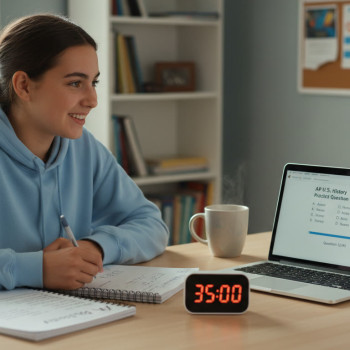
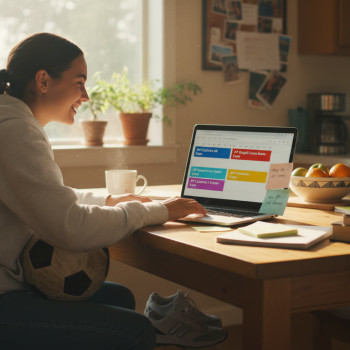

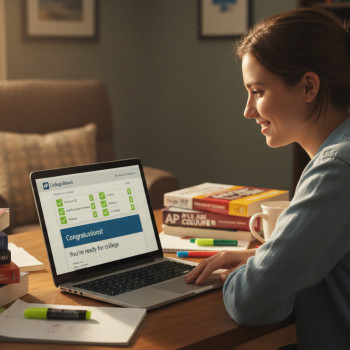
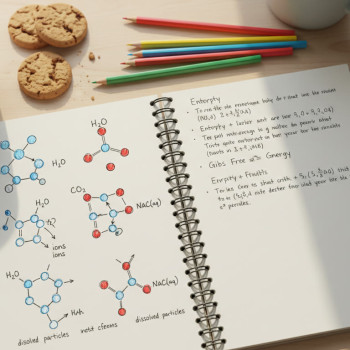

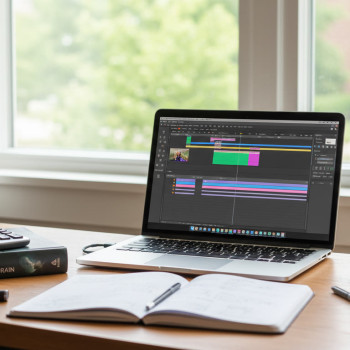














No Comments
Leave a comment Cancel